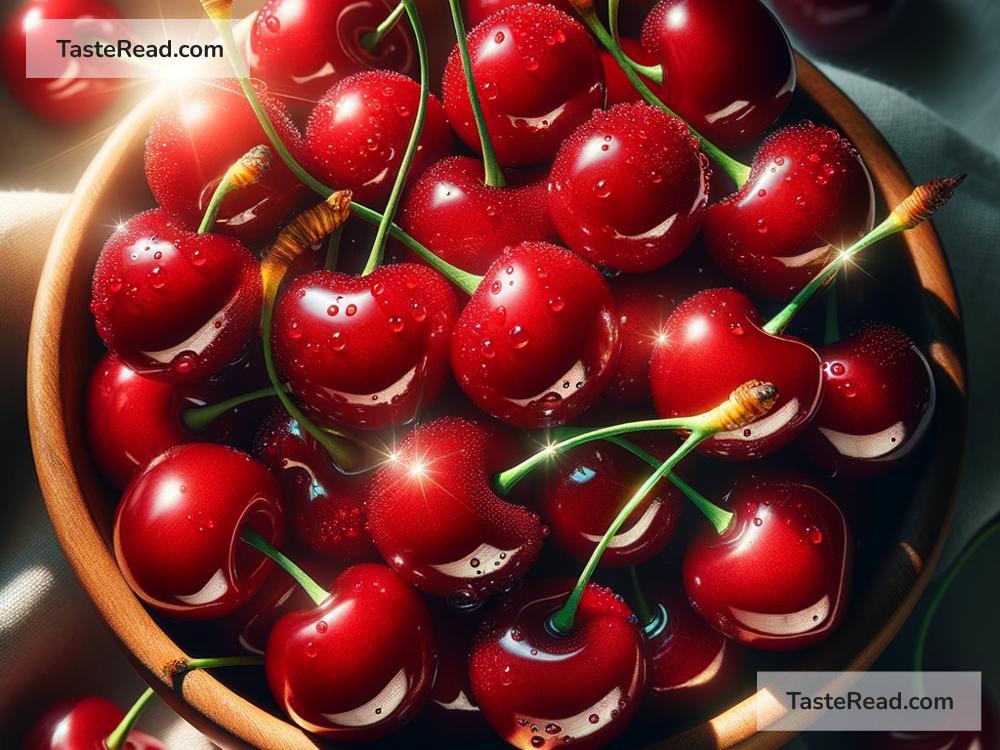The Truth About Cherries and Their Vibrant Color
Cherries are one of nature’s jewels—small, delicious fruits that look as beautiful as they taste. With their bright, vibrant red color, cherries are hard to ignore. But have you ever wondered what makes cherries so colorful? Do they naturally grow this way? Is there something deeper about their color? Let’s take a closer look at the truth behind cherries, their vibrant appearance, and some fun facts about this amazing fruit.
What Gives Cherries Their Bright Color?
The main reason cherries have such a bright red color is because of something called anthocyanins. Anthocyanins are natural plant pigments that are responsible for red, purple, and blue colors in many fruits, vegetables, and flowers. These pigments act like tiny color factories inside the cherries, giving them their beautiful shade.
Interestingly, anthocyanins aren’t just about good looks—they have some amazing health benefits as well! Scientists say that anthocyanins are antioxidants, which help protect your body from damage caused by harmful molecules called free radicals. This means cherries not only look good but are also good for you!
Do All Cherries Look the Same?
If you’ve ever bought cherries at a grocery store or picked them from an orchard, you may have noticed that not all cherries look identical. Some are deep, dark red, while others are lighter, almost pink. And sometimes you might even find cherries that are yellow or red and yellow mixed together. Why is that?
There are many different types of cherries grown around the world, and their color depends on the variety. For example:
– Sweet cherries, like Bing cherries, are usually dark red or even close to black when fully ripe.
– Sour cherries, like Montmorency cherries, are typically bright red.
Yellow cherries, like Rainier cherries, are another variety altogether. They tend to have a softer flavor and are much lighter in color. So, the type of cherry you’re eating plays a big role in how colorful it looks.
Does the Environment Affect Cherry Color?
The environment can also affect a cherry’s color. Cherries grow on trees, and how much sunlight they receive while ripening can influence their appearance. More sunlight can help fruit develop richer pigments, making cherries darker and more vibrant. On the flip side, if cherries don’t get enough sunlight, their color may be lighter.
In addition to sunlight, temperature also matters. Cooler weather during the growing season can help cherries maintain their bright colors for longer, while too much heat might make them ripen faster but fade in vibrancy. So, farmers often pay close attention to the weather when growing cherries to make sure they turn out perfect!
The Link Between Color and Ripeness
When you’re picking cherries, their color is often a clue about how ripe they are. In general, cherries start out green when they first grow on the tree. As they begin to ripen, they change color—typically to a shade of red, yellow, or even black, depending on the variety.
Ripe cherries tend to have deeper, fuller colors. In sweet cherries, for instance, dark red or black usually means they’re ready to eat. For sour cherries, a bright red color is a sign they’re ripe. If the cherries still look pale or uneven in color, they probably need more time to ripen. So, always check the color before you take a bite!
Are Cherries Ever Artificially Colored?
Most cherries you buy fresh from the store or pick straight from the tree are 100% natural, including their color. However, some cherries are artificially colored, especially in processed foods like cherry pie fillings or maraschino cherries.
Maraschino cherries—the bright red ones used as toppings for drinks and desserts—are treated with food coloring to make them stand out. The coloring process is usually used to give them a bold, candy-like look. While these cherries can still taste good, they’re very different from the fresh versions you find at the market.
More Reasons to Love Cherries
Aside from their gorgeous color, cherries are full of nutrients that help keep you healthy. They’re rich in vitamins like vitamin C, potassium, and fiber. Plus, those anthocyanins we mentioned earlier don’t just protect your body—they can also help reduce inflammation and support heart health.
Cherries are also low in calories, making them a healthy snack for almost anyone. Whether you enjoy them fresh, dried, or in your favorite dessert, cherries are a tasty treat that’s hard to beat!
Conclusion
Cherries are more than just pretty-looking fruits. Their vibrant color comes from natural pigments called anthocyanins, which are not only stunning but also packed with health benefits. Factors like the type of cherry, sunlight, and ripeness all play a role in how cherries look and taste.
So, the next time you enjoy these little red gems, think about the amazing science and care behind their color—and don’t forget to savor every bite! Cherries truly are one of nature’s most wonderful gifts.


